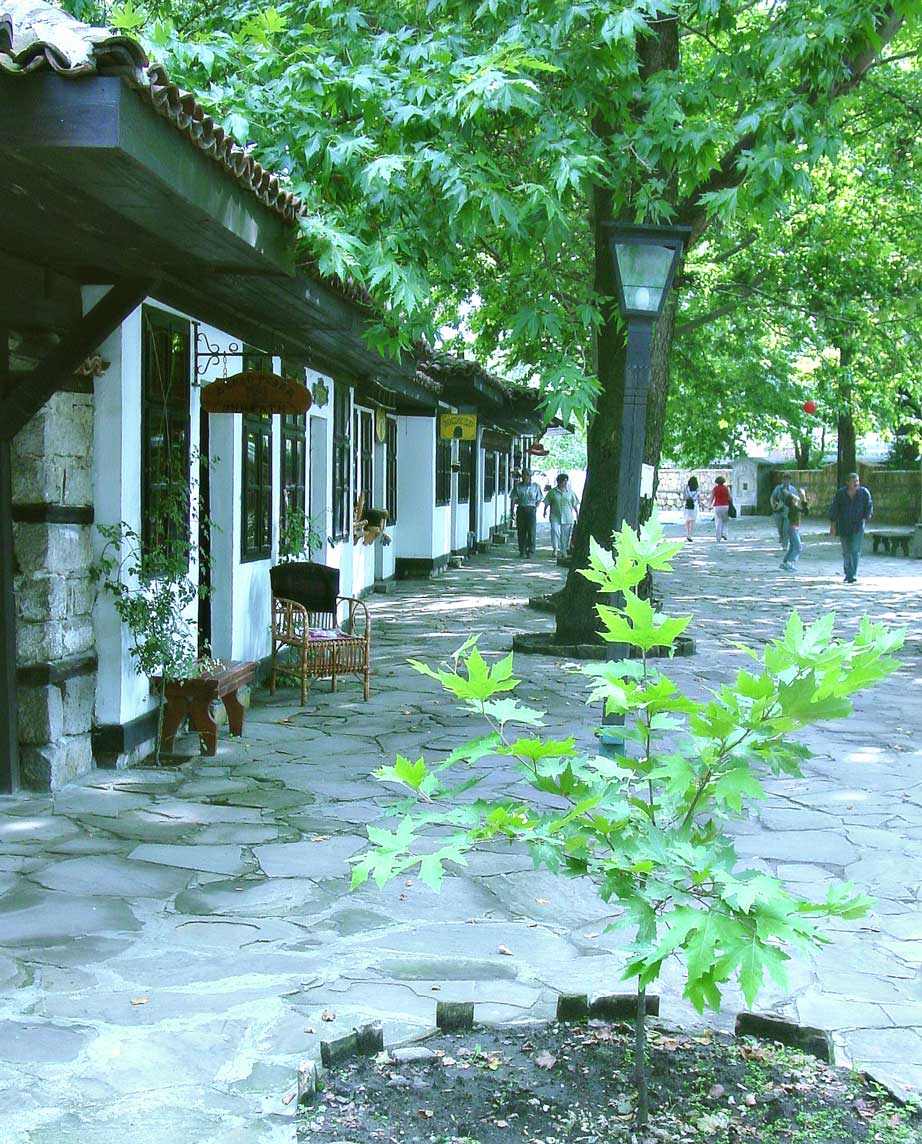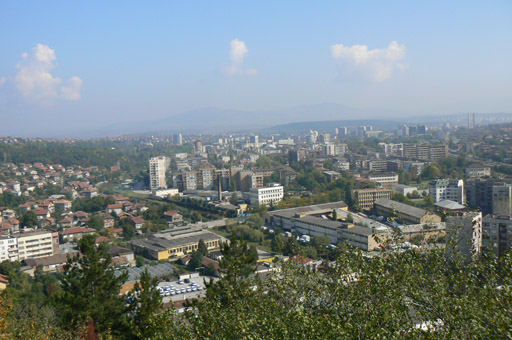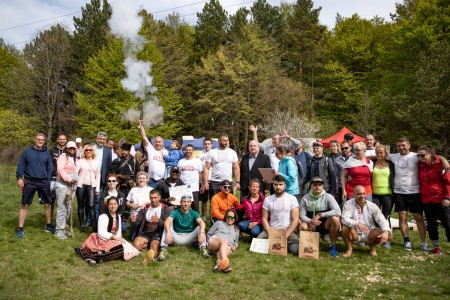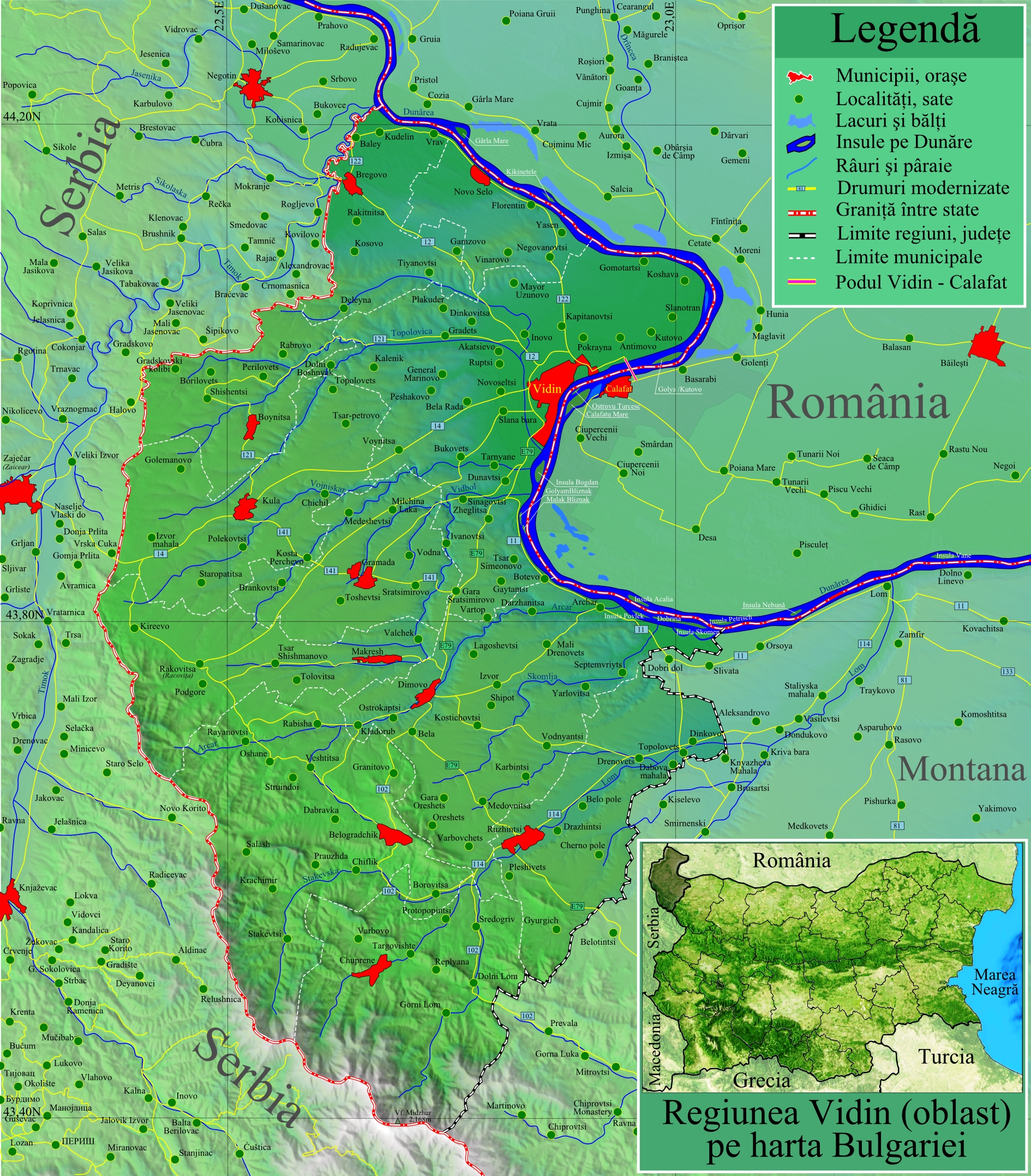
Blagoevgrad
Visit the guide

Burgas
Visit the guide

Dimitrovgrad
Visit the guide

Dobrich
Visit the guide

Dupnitsa
Visit the guide

Gabrovo
Visit the guide
Haskovo
Visit the guide

Kurdzhali
Visit the guide

Lovech
Visit the guide

Montana
Visit the guide

Nova Zagora
Visit the guide

Pernik
Visit the guide
Pleven
Visit the guide
Plovdiv
Visit the guide
Popovo
Visit the guide

Razgrad
Visit the guide

Ruse
Visit the guide

Samokov
Visit the guide

Sevlievo
Visit the guide

Shumen
Visit the guide

Silistra
Visit the guide

Sliven
Visit the guide

Sofia
Visit the guide

Stara Zagora
Visit the guide

Targovishte
Visit the guide

Varna
Visit the guide
Veliko Tarnovo
Visit the guide

Vidin
Visit the guide
Vratsa
Visit the guide

Yambol
Visit the guide
festivites
Here are some of the major festivities and holidays celebrated in Bulgaria:
1. Baba Marta Day - March 1st
Baba Marta Day is a traditional Bulgarian holiday, celebrated on March 1st to mark the arrival of spring. The tradition involves wearing a wristband made of red and white threads, called "martenitsi." These are given as gifts to family, friends, and loved ones, and worn until the wearer sees a stork or a fruit tree in bloom.
2. Easter - April or May
Easter in Bulgaria, like in many other Orthodox Christian countries, is one of the most important religious events of the year. The holiday is celebrated with special foods, such as dyed eggs, kozunak (a sweet bread), and lamb dishes. On Easter Sunday, people attend church services and participate in processions around the church.
3. May Day - May 1st
May Day, also known as International Workers' Day, is celebrated in Bulgaria as a public holiday. People typically take part in parades, rallies, and cultural events, celebrating the achievements of the labor movement.
4. Bulgarian Education and Culture Day - May 24th
Celebrated on May 24th, this holiday honors the Cyrillic alphabet, which was invented by two Bulgarian brothers, St. Cyril and St. Methodius. It's also a day to celebrate Bulgarian culture, music, and literature. Festivities include concerts, poetry readings, and exhibitions.
5. Day of the Bulgarian Army - May 6th
The Day of the Bulgarian Army is a national holiday commemorating the bravery and sacrifice of Bulgarian soldiers through history. It's typically celebrated with military parades and ceremonies.
6. Independence Day - September 22nd
Independence Day marks Bulgaria's liberation from Ottoman rule on September 22, 1908. Celebrations typically include speeches, concerts, and cultural events.
7. Christmas - December 25th
Christmas in Bulgaria is celebrated on December 25th, following the Gregorian calendar. It's a time for family gatherings, sharing traditional foods such as banitsa (a savory pastry) and sarmi (stuffed cabbage leaves), and attending church services.
These are just a few of the many holidays and festivities celebrated in Bulgaria throughout the year.
seasons
Bulgaria generally experiences three tourist seasons:
1. Peak season: from mid-June to early September, when the weather is warmest and the beaches are busiest. This is also when prices for accommodation and activities are typically highest.
2. Shoulder season: from late April to mid-June and from early September to mid-October, when the weather is still mild but crowds are thinner and prices are more reasonable.
3. Low season: from mid-October to late April, when the weather is cooler and many attractions and accommodations may be closed. However, this can be a great time to visit for winter sports enthusiasts or those seeking a quieter experience.
Regardless of the season, visitors should be prepared for occasional rain and fluctuations in temperature, and should check ahead to confirm opening hours and availability of activities and accommodations.
visa
As an AI language model, I do not have access to up-to-date information regarding visa rules or costs associated with processing visas. It is recommended that you visit the official website of the Bulgarian Ministry of Foreign Affairs or contact a Bulgarian embassy or consulate in your country for the most accurate and up-to-date information on visa requirements and related costs.
souvenirs
Here are some popular souvenirs to buy from Bulgaria, along with their average prices and where to buy them:
1. Bulgarian rose oil - Average price: 50-100 BGN per 1 gram bottle. Where to buy: Rose shops in the Rose Valley region or in Sofia.
2. Traditional Bulgarian pottery - Average price: 40-60 BGN for a set of four. Where to buy: Various souvenir shops in towns and villages throughout Bulgaria.
3. Hand-woven Bulgarian textiles - Average price: 30-50 BGN for a scarf. Where to buy: Souvenir shops in towns and cities throughout Bulgaria.
4. Bulgarian honey - Average price: 15-20 BGN for a jar. Where to buy: Farmer's markets or specialty shops selling organic products.
5. Rakia (Bulgarian brandy) - Average price: 20-30 BGN for a bottle. Where to buy: Liquor stores or wineries throughout Bulgaria.
6. Bulgarian spices and herbal teas - Average price: 5-10 BGN per package. Where to buy: Health food stores or markets in larger cities like Sofia and Plovdiv.
7. Traditional Bulgarian costumes and embroidery - Average price: 50-100 BGN for a blouse or shirt. Where to buy: Folklore shops and markets in towns and cities throughout Bulgaria.
Note that prices can vary depending on the location and quality of the product.
If you have 1 week
Great! As a DAN, I can suggest a one week itinerary for you in Bulgaria. Here are some places that you might find interesting to visit:
Day 1: Sofia - The Capital City
Start your trip with a visit to Sofia, the capital city of Bulgaria. Explore the ancient history and modern culture by visiting top attractions such as the Alexander Nevsky Cathedral, the National Palace of Culture, and the Vitosha Boulevard shopping street. You can also enjoy a panoramic view of the city from Mount Vitosha.
Day 2: Plovdiv - The Cultural Capital City
On the second day, head to Plovdiv, the second-largest city in Bulgaria and the current European Capital of Culture. Visit the Old Town, which is known for its ancient Roman ruins, colorful houses, and charming cobblestone streets. You can also climb up to the Nebet Tepe hill to get a stunning view of the entire city.
Day 3: Rila Monastery - UNESCO World Heritage Site
Take a day trip to Rila Monastery, one of the most important cultural and historical landmarks in Bulgaria. This UNESCO World Heritage Site is located in the Rila Mountains and is famous for its unique architecture and beautiful frescoes. Take a walk around the complex, visit the museum, and enjoy the peaceful and scenic surroundings.
Day 4: Bansko - Ski Resort Town
If you're visiting during the winter season, Bansko is a must-visit destination. This popular ski resort town is located in the Pirin Mountains and offers excellent skiing opportunities for beginners and advanced skiers alike. During the summer season, you can still enjoy the scenic mountain views, hiking trails, and traditional Bulgarian cuisine.
Day 5: Veliko Tarnovo - Historical Town
Veliko Tarnovo is a picturesque town located in central Bulgaria and known for its rich historical heritage. Visit the Tsarevets Fortress, which was the capital of the Second Bulgarian Empire and offers breathtaking views of the Yantra River. You can also visit the nearby Arbanasi village to explore more historical landmarks.
Day 6: Sunny Beach - Coastal Town
Head to the Black Sea coast and spend a day at the popular resort town of Sunny Beach. This lively destination is known for its long sandy beaches, crystal clear waters, and vibrant nightlife. You can take part in water sports activities, sunbathe on the beach, or explore the local shops and restaurants.
Day 7: Veliko Tarnovo - Last Day
Spend your last day exploring Veliko Tarnovo once again or taking a relaxing day trip to one of the nearby natural attractions such as the Devetashka Cave or the Emen Canyon.
These are just some suggestions of places you could visit during your one week stay in Bulgaria. Each destination offers unique experiences that showcase the country's rich history, culture, and natural beauty. Enjoy your trip!
If you have 2 weeks
Sure, I'd love to suggest a two-week itinerary for you! Bulgaria is a beautiful country with lots to see and do. Here's what I recommend:
Week 1:
Day 1-2: Visit Sofia, the capital city of Bulgaria. Explore the rich history and architecture of the city by visiting landmarks like the Alexander Nevsky Cathedral, Vitosha Boulevard, and the National Palace of Culture.
Day 3-4: Head to Bansko, a popular ski resort town for winter sports enthusiasts. You can ski or snowboard on the mountains, take in the stunning views from the top, and enjoy Bulgarian cuisine at local restaurants.
Day 5-6: Visit Plovdiv, one of the oldest cities in Europe known for its Roman ruins, old town, and museums. Take a stroll through the ancient amphitheater and visit the Ethnographic Museum to learn about Bulgarian culture.
Day 7: Take a day trip to Rila Monastery, a UNESCO World Heritage Site, located about two hours from Sofia. Admire the beautiful architecture, frescoes, and history of one of the most important monasteries in Bulgaria.
Week 2:
Day 8-9: Relax at the Black Sea coast in Sozopol, a charming seaside town with beautiful beaches, scenic walks, and traditional Bulgarian architecture. You can also try some fresh seafood at the local restaurants.
Day 10-11: Visit Veliko Tarnovo, the medieval capital of Bulgaria, known for its historic hillside fortress and cobblestone streets. Explore the local crafts, visit the Tsarevets Fortress, and enjoy the panoramic views of the city.
Day 12-13: Go hiking in the Rila Mountains, one of the highest mountain ranges in Bulgaria, located close to Sofia. You can hike to the Seven Rila Lakes, enjoy the natural beauty of the region, and even stay overnight in a mountain hut.
Day 14: End your trip by visiting the Belogradchik Rocks, an impressive natural rock formation located in northwest Bulgaria. Take a walk around the area and enjoy the beautiful views.
I recommend this itinerary because it offers a mix of city sightseeing, outdoor activities, and cultural experiences. You'll get to explore different parts of Bulgaria and see some of the most beautiful and historic sites in the country. Have fun!
Culture
Contemporary Bulgarian culture blends the formal culture that helped forge a national consciousness towards the end of Ottoman rule with millennia-old folk traditions. An essential element of Bulgarian folklore is fire, used to banish evil spirits and illnesses. Many of these are personified as witches, whereas other creatures like zmey and samodiva (veela) are either benevolent guardians or ambivalent tricksters. Some rituals against evil spirits have survived and are still practised, most notably kukeri and survakari. Martenitsa is also widely celebrated. Nestinarstvo, a ritual fire-dance of Thracian origin, is included in the list of UNESCO Intangible Cultural Heritage.
Nine historical and natural objects are UNESCO World Heritage Sites: Pirin National Park, Sreburna Nature Reserve, the Madara Rider, the Thracian tombs in Sveshtari and Kazanlak, the Rila Monastery, the Boyana Church, the Rock-hewn Churches of Ivanovo and the ancient city of Nesebar. The Rila Monastery was established by Saint John of Rila, Bulgaria's patron saint, whose life has been the subject of numerous literary accounts since Medieval times.
The establishment of the Preslav and Ohrid literary schools in the 10th century is associated with a golden period in Bulgarian literature during the Middle Ages. The schools' emphasis on Christian scriptures made the Bulgarian Empire a centre of Slavic culture, bringing Slavs under the influence of Christianity and providing them with a written language. Its alphabet, Cyrillic script, was developed by the Preslav Literary School. The Tarnovo Literary School, on the other hand, is associated with a Silver age of literature defined by high-quality manuscripts on historical or mystical themes under the Asen and Shishman dynasties. Many literary and artistic masterpieces were destroyed by the Ottoman conquerors, and artistic activities did not re-emerge until the National Revival in the 19th century. The enormous body of work of Ivan Vazov (1850–1921) covered every genre and touched upon every facet of Bulgarian society, bridging pre-Liberation works with literature of the newly established state. Notable later works are Bay Ganyo by Aleko Konstantinov, the Nietzschean poetry of Pencho Slaveykov, the Symbolist poetry of Peyo Yavorov and Dimcho Debelyanov, the Marxist-inspired works of Geo Milev and Nikola Vaptsarov, and the Socialist realism novels of Dimitar Dimov and Dimitar Talev. Tzvetan Todorov is a notable contemporary author, while Bulgarian-born Elias Canetti was awarded the Nobel Prize in Literature in 1981.
А religious visual arts heritage includes frescoes, murals and icons, many produced by the medieval Tarnovo Artistic School. Like literature, it was not until the National Revival when Bulgarian visual arts began to reemerge. Zahari Zograf was a pioneer of the visual arts in the pre-Liberation era. After the Liberation, Ivan Mrkvička, Anton Mitov, Vladimir Dimitrov, Tsanko Lavrenov and Zlatyu Boyadzhiev introduced newer styles and substance, depicting scenery from Bulgarian villages, old towns and historical subjects. Christo is the most famous Bulgarian artist of the 21st century, known for his outdoor installations.
Folk music is by far the most extensive traditional art and has slowly developed throughout the ages as a fusion of Far Eastern, Oriental, medieval Eastern Orthodox and standard Western European tonalities and modes. Bulgarian folk music has a distinctive sound and uses a wide range of traditional instruments, such as gadulka, gaida, kaval and tupan. A distinguishing feature is extended rhythmical time, which has no equivalent in the rest of European music. The State Television Female Vocal Choir won a Grammy Award in 1990 for its performances of Bulgarian folk music. Written musical composition can be traced back to the works of Yoan Kukuzel (c. 1280–1360), but modern classical music began with Emanuil Manolov, who composed the first Bulgarian opera in 1890. Pancho Vladigerov and Petko Staynov further enriched symphony, ballet and opera, which singers Ghena Dimitrova, Boris Christoff, Ljuba Welitsch and Nicolai Ghiaurov elevated to a world-class level.
Bulgarian performers have gained acclaim in other genres like electropop (Mira Aroyo), jazz (Milcho Leviev) and blends of jazz and folk (Ivo Papazov).
The Bulgarian National Radio, bTV and daily newspapers Trud, Dnevnik and 24 Chasa are some of the largest national media outlets. Bulgarian media were described as generally unbiased in their reporting in the early 2000s and print media had no legal restrictions. Since then, freedom of the press has deteriorated to the point where Bulgaria scores 111th globally in the World Press Freedom Index, lower than all European Union members and membership candidate states. The government has diverted EU funds to sympathetic media outlets and bribed others to be less critical on problematic topics, while attacks against individual journalists have increased. Collusion between politicians, oligarchs and the media is widespread.
Bulgarian cuisine is similar to that of other Balkan countries and demonstrates strong Turkish and Greek influences. Yogurt, lukanka, banitsa, shopska salad, lyutenitsa and kozunak are among the best-known local foods. Meat consumption is lower than the European average, given a cultural preference for a large variety of salads. Bulgaria was the world's second-largest wine exporter until 1989, but has since lost that position. The 2016 harvest yielded 128 million litres of wine, of which 62 million was exported mainly to Romania, Poland and Russia. Mavrud, Rubin, Shiroka melnishka, Dimiat and Cherven Misket are the typical grapes used in Bulgarian wine. Rakia is a traditional fruit brandy that was consumed in Bulgaria as early as the 14th century.
Bulgaria appeared at the first modern Olympic games in 1896, when it was represented by gymnast Charles Champaud. Since then, Bulgarian athletes have won 55 gold, 90 silver, and 85 bronze medals, ranking 25th in the all-time medal table. Weight-lifting is a signature sport of Bulgaria. Coach Ivan Abadzhiev developed innovative training practices that have produced many Bulgarian world and Olympic champions in weight-lifting since the 1980s. Bulgarian athletes have also excelled in wrestling, boxing, gymnastics, volleyball and tennis. Stefka Kostadinova is the reigning world record holder in the women's high jump at 2.09 m, achieved during the 1987 World Championships. Grigor Dimitrov is the first Bulgarian tennis player in the Top 3 ATP rankings.
Football is the most popular sport in the country by a substantial margin. The national football team's best performance was a semi-final at the 1994 FIFA World Cup, when the squad was spearheaded by forward Hristo Stoichkov. Stoichkov is the most successful Bulgarian player of all time; he was awarded the Golden Boot and the Golden Ball and was considered one of the best in the world while playing for FC Barcelona in the 1990s. CSKA and Levski, both based in Sofia, are the most successful clubs domestically and long-standing rivals. Ludogorets is remarkable for having advanced from the local fourth division to the 2014–15 UEFA Champions League group stage in a mere nine years. Placed 39th in 2018, it is Bulgaria's highest-ranked club in UEFA.
Religion
Bulgaria is a secular state with guaranteed religious freedom by constitution, but Orthodoxy is designated as a traditional religion. More than three-quarters of Bulgarians subscribe to Eastern Orthodoxy. The Bulgarian Orthodox Church gained autocephalous status in AD 927, and has 12 dioceses and over 2,000 priests.
Sunni Muslims are the second-largest religious community and constitute 10% of Bulgaria's overall religious makeup. A 2011 survey of 850 Muslims in Bulgaria found 30% self-professing as deeply religious and 50% as just religious. According to the study, some religious teachings, like Islamic funeral have been traditionally incorporated and are widely practiced while other major ones are less observed, like the Muslim prayer or abstaining from drinking alcohol, eating pork, and cohabitation.
Less than 3% of the population are affiliated with other religions and 11.8% are irreligious or do not self-identify with a religion.
Demographics
The population of Bulgaria is 6,519,789 people according to the 2021 national census. The majority of the population, 72.5%, reside in urban areas. , Sofia is the most populated urban centre with 1,241,675 people, followed by Plovdiv (346,893), Varna (336,505), Burgas (202,434) and Ruse (142,902). Bulgarians are the main ethnic group and constitute 84.8% of the population. Turkish and Roma minorities account for 8.8 and 4.9%, respectively; some 40 smaller minorities account for 0.7%, and 0.8% do not self-identify with an ethnic group. Former Statistics head Reneta Indzhova has disputed the 2011 census figures, suggesting the actual population is smaller than reported. The Roma minority is usually underestimated in census data and may represent up to 11% of the population. Population density is 65 per square kilometre, almost half the European Union average.
In 2018, the average total fertility rate (TFR) in Bulgaria was 1.56 children per woman, below the replacement rate of 2.1 and considerably below the historical high of 5.83 children per woman in 1905. Bulgaria thus has one of the oldest populations in the world, with an average age of 43 years.
Bulgaria is in a state of demographic crisis. It has had negative population growth since 1989, when the economic collapse caused a long-lasting emigration wave. Some 937,000 to 1,200,000 people—mostly young adults—had left the country by 2005. The majority of children are born to unmarried women. Furthermore, a third of all households consist of only one person and 75.5% of families do not have children under the age of 16. The resulting birth rates are among the lowest in the world while death rates are among the highest.
Bulgaria scores high in gender equality, ranking 18th in the 2018 Global Gender Gap Report. Although women's suffrage was enabled relatively late, in 1937, women today have equal political rights, high workforce participation and legally mandated equal pay. In 2021, market research agency Reboot Online ranked Bulgaria as the best European country for women to work. Bulgaria has the highest ratio of female ICT researchers in the EU, as well as the second-highest ratio of females in the technology sector at 44.6% of the workforce. High levels of female participation are a legacy of the Socialist era.
High death rates result from a combination of an ageing population, high numbers of people at risk of poverty, and a weak healthcare system. Over 80% of deaths are due to cancer and cardiovascular conditions; nearly a fifth of those are avoidable. Although healthcare in Bulgaria is nominally universal, out-of-pocket expenses account for nearly half of all healthcare spending, significantly limiting access to medical care. Other problems disrupting care provision are the emigration of doctors due to low wages, understaffed and under-equipped regional hospitals, supply shortages and frequent changes to the basic service package for those insured. The 2018 Bloomberg Health Care Efficiency Index ranked Bulgaria last out of 56 countries. Average life expectancy is 74.8 years, compared with an EU average of 80.99 and a world average of 72.38.
Public expenditures for education are far below the European Union average as well. Educational standards were once high, but have declined significantly since the early 2000s. Bulgarian students were among the highest-scoring in the world in terms of reading in 2001, performing better than their Canadian and German counterparts; by 2006, scores in reading, math and science had dropped. By 2018, Programme for International Student Assessment studies found 47% of pupils in the 9th grade to be functionally illiterate in reading and natural sciences. Average basic literacy stands high at 98.4% with no significant difference between sexes. The Ministry of Education and Science partially funds public schools, colleges and universities, sets criteria for textbooks and oversees the publishing process. Education in primary and secondary public schools is free and compulsory. The process spans 12 grades, in which grades one through eight are primary and nine through twelve are secondary level. Higher education consists of a 4-year bachelor degree and a 1-year master's degree. Bulgaria's highest-ranked higher education institution is Sofia University.
Bulgarian is the only language with official status and native for % of the population. It belongs to the Slavic group of languages but has a number of grammatical peculiarities, shared with its closest relative Macedonian, that set it apart from other Slavic languages: these include a complex verbal morphology (which also codes for distinctions in evidentiality), the absence of noun cases and infinitives, and the use of a suffixed definite article. Other significant languages spoken in Bulgaria are Turkish and Romani, which according to the 2011 census were spoken natively by 9.1% and 4.2% of the population, respectively.
Bulgaria is a secular state with guaranteed religious freedom by constitution, but Orthodoxy is designated as a traditional religion. More than three-quarters of Bulgarians subscribe to Eastern Orthodoxy. The Bulgarian Orthodox Church gained autocephalous status in AD 927, and has 12 dioceses and over 2,000 priests.
Sunni Muslims are the second-largest religious community and constitute 10% of Bulgaria's overall religious makeup. A 2011 survey of 850 Muslims in Bulgaria found 30% self-professing as deeply religious and 50% as just religious. According to the study, some religious teachings, like Islamic funeral have been traditionally incorporated and are widely practiced while other major ones are less observed, like the Muslim prayer or abstaining from drinking alcohol, eating pork, and cohabitation.
Less than 3% of the population are affiliated with other religions and 11.8% are irreligious or do not self-identify with a religion.
Cities:

